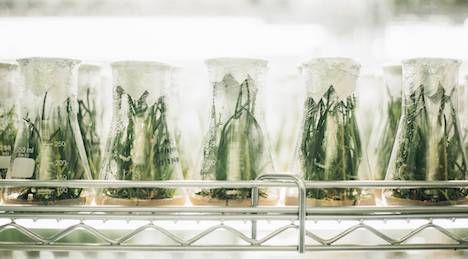
The Women in Science We Don’t Write About
This post on women in science is part of our International Women’s Day celebration. See all the posts here.
This is a guest post from Silvia Moreno-Garcia. She is the critically-acclaimed author of Signal to Noise—winner of a Copper Cylinder Award, finalist of the British Fantasy, Locus, Sunburst and Aurora awards—and Certain Dark Things, selected as one of NPR’s best books of 2016. She won a World Fantasy Award for her work as an editor.
I took my whole family to watch the movie Hidden Figures and purchased the book which inspired the movie a few weeks ago. As you probably have heard by now, both are an account of the real-life women who worked as “human computers” at NASA. I had heard about these kind of mathematicians who advanced the trajectory of science with slide rulers and pencils, but until Hidden Figures I did not realize there was a “colored computers” division.
Such historical gaps are numerous. We learn about the accomplishments of great men but often have been hard-pressed to find the women who worked in labs and research centers, especially the women of color.
The first programmers were women, but although Steve Jobs had a biopic or two there has been no film about Grace Hopper, who is famously credited with discovering the first “computer bug” when she found a moth trapped inside a Mark II Aiken Relay Computer at Harvard University. Many people do not realize that important astronomical calculations were performed by women at Harvard Observatory. These mathematicians are remembered by the collective moniker “Pickering’s Harem,” which tells you something about the status of women in the late 19th century.
Women like Emilie du Chatelet led fascinating lives in settings which would make for grandiose books. Du Chatelet was mathematician in 18th century France in touch with many important thinkers, who had a long-time relationship with Voltaire, and who, knowing she would likely die giving birth to a child, hurried to complete her translation and commentary of Newton’s Principia.
Women also overcame great odds, which surely make for great drama. Anandi Gopal Joshi wanted to get a medical education, but she needed to go to the United States and people there wanted her to convert to Christianity in order to enter college.
Other women in the sciences who pique my interest did not perform laudable tasks. I wrote my thesis on the topic of eugenics. Although women were often the object of mistreatment, they also participated in the subjugation and mistreatment of fellow women of lower classes and women of color. Charles Davenport, who ran the Cold Spring Harbor lab, employed women as field workers, gathering genealogical and health data. I recall reading an interview with a nurse at an American facility for the “epileptics and feebleminded” discussing the thousands of forced sterilizations she witnessed and explaining it was what her bosses wanted. It’s a chilling statement.
Nor did all the women in sciences have a happy ending: Roger Arliner Young was the first African-American woman to receive a doctorate in zoology, but her career was riddled with challenges. After years of juggling her research and caring for her invalid mother, Young entered the Mississippi State Mental Asylum where she passed away in 1964.
All these women inhabit the margins of history, relegated to footnotes, and yet they can serve as a rich source of inspiration, not only for writers penning historical narratives, but for anyone looking for interesting figures to serve as a jumping-off point for the imagination. I realize that people like Queen Victoria or Elizabeth I are more likely to inspire narratives by virtue of their fame, and that many fantasy books are likely to lean more towards imagining a Daenerys Targaryen than an Ynes Mexia, but a girl can dream, can’t she?
In fact, I’ve been thinking a lot about Mexia.
Ynex Mexia was a Mexican naturalist known for her large collection of specimens. She began collecting specimens at 51 and in a mere 13 years amassed over 8,000 plant specimens. She died of lung cancer in 1938. Many of her field notes and specimens are housed at the University of California, Berkeley.
We tend to like young protagonists and we even tend to think genius must reside only in the young. But here is Mexia, a woman who finds her passion later in life. As someone with an interest in mushrooms, it’s good to know there is still hope for me. I keep thinking I should write a story inspired by her. But of course I’m just one writer with a limited amount of time, so I must ask: what woman of science will be your inspiration for a story?
Also In This Story Stream
- Terry Tempest Williams on Women and Books
- Feminist-Friendly Comic Books
- Lauren Beukes On Writers and Their Cats
- Fatima Mernissi, Morocco’s Feminist Icon
- Sonali Dev on Why She Writes The Heroines She Writes
- All Around the World: Women Writers from Every Continent
- On Worldviews and Reading Widely
- 50 of the Best Heroines from Middle Grade Books
- Between Worlds: Finding Home in Fantasy













